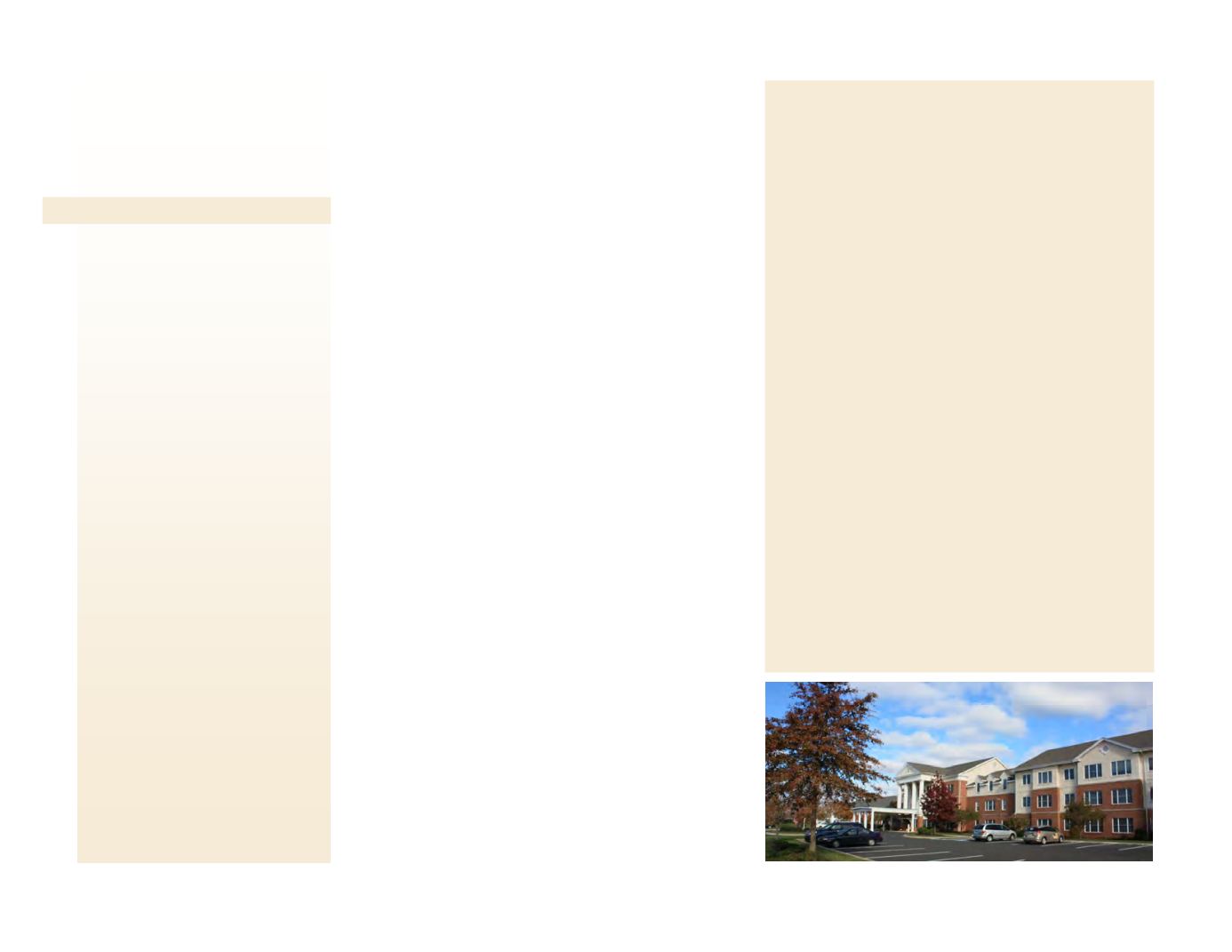
116
THE HOMES OF MONTGOMERY COUNTY
PLANNING ISSUE
More than 70,000 seniors
ages 65 and over will join the
county’s ranks by the year
2040—it will be crucial to
continue providing senior
housing options as our baby
boomers age and have the
desire to both age in place
and have adaptable living
arrangements.
Existing Housing Totals
Housing Characteristics
Housing Costs and Affordability
Senior Housing
Group Homes and Special
Needs Housing
Jobs-Housing Balance
Future Housing Demand
Senior Housing
Housing that is appropriate for an aging population is an
issue that has county-wide importance. For starters, the
state’s senior-friendly tax laws and the county’s central
location in the Philadelphia region have helped make the
county a very attractive place in which seniors choose to
live. Having housing options that fit the shifting needs of
the county’s senior population allows them to age in place
and ultimately, to stay near the things that matter most,
such as their families, health care resources, and support
networks. As our baby boomers continue to age, we
should assume that the county’s housing needs will
continue to change.
Senior housing is primarily concentrated around private
housing, age restricted communities, assisted living facilities
and nursing homes. And as technology and in-home care
improves and housing options grow, it appears that more and
more people choose to age in place, either in their own
homes or with a family member who provides assistance.
“Mother-in-law suites” may provide an option for seniors
that still want independence and have the desire to stay close
to family.
Age restricted communities are popular with the county’s
senior population—the percentage of seniors age 65 and
over living in age restricted communities doubled between
2000 and 2010. Nearly half of the county’s age restricted
developments have been built since 2000, many in the North
Penn and Indian Valley regions. And some communities
may shift to be age targeted—with senior-friendly elements
like ground floor master bedrooms, convenient locations,
smaller unit sizes, or recreational amenities but without any
age restrictions on residents.
Continuing care retirement communities (known as CCRCs
or lifecare communities) fill a unique housing need that
includes a combination of independent living units, assisted
living facilities, and nursing care within a development.
Additionally, there are 26 housing developments with just
over 2,000 dwelling units that serve the needs of low and
moderate income seniors, such as Ardmore House in Lower
Merion and the Sidney Pollack House in Pottstown.
What’s New
Baby boomers have started to turn 65—which is playing
a big part in the changing landscape of aging and new
home construction in Montgomery County.
•
By 2040, 33% of county residents will be 55 and
older. 21% of county residents will be 65 and older.
•
More than 50—or half—of the county’s age
restricted developments have been built since 2000.
•
The number of people ages 65 and over turning to
nursing homes and assisted living facilities has gone
down over the last ten years as seniors are living
longer, healthier lives and can more easily arrange
for in-home care for their daily needs.
•
Changes in technology as well as the building
community have allowed many new innovations to
enter the marketplace—ranging from pre-fabricated
in-law suites that can be added onto one’s home to
innovative site planning ideas to foster community
and cooperation among neighbors.
•
Although today’s seniors are wealthier than
previous generations, median household income
drops significantly as people age—this is especially
evident in the 65+ age bracket when it can be
assumed that many householders in this category no
longer receive an annual salary. Affordable housing
options for seniors will continue to be important.


